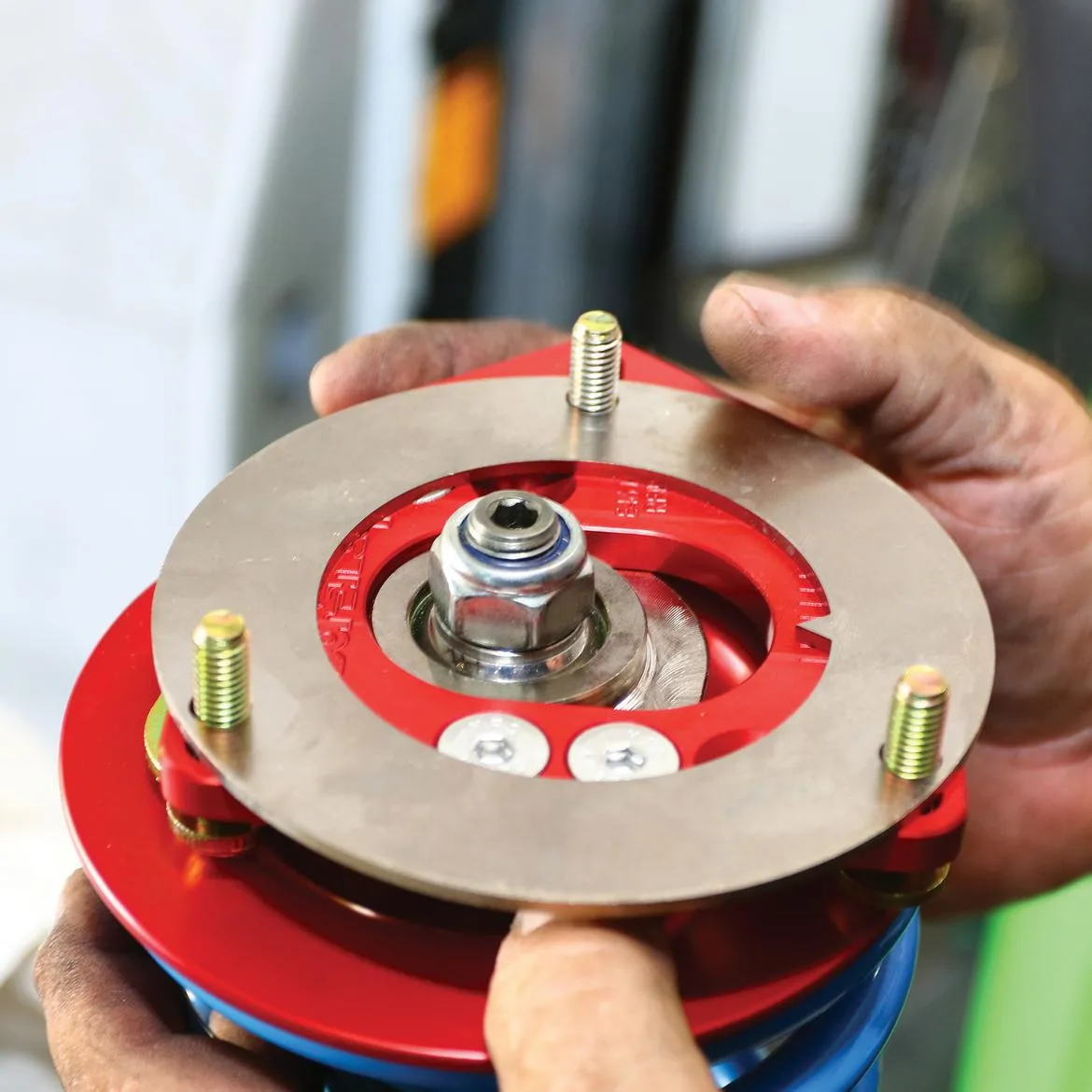An easy adjustment that can unlock both increased speed and tire life? Likely just adding more negative camber, especially up front.
Increased negative camber–how much the tops of the tires tilt inward– simply places more of the tire’s tread against the pavement during cornering. The result: increased efficiency courtesy of more grip.
Option 1: Moving the Top of the Strut
Aftermarket camber plates can easily add more negative camber. Some, like these, are adjustable; others simply reposition the top of the strut to a new, fixed location. Photography Credit: David S. Wallens
This is the most common method of camber adjustment: simply sliding the top of the strut inboard. Some factory strut top mounts have slotted or at least loose holes, and you can possibly eke out a degree of adjustment on these rare setups.
Since most cars don’t have provisions for adjusting the top of the strut, new hardware is required–specifically, new upper strut mounts. Some of these strut mounts–aka camber plates–are slotted to allow a range of adjustment while others offer only a fixed change. Camber plates can often work with the OEM diameter springs and not raise or lower the ride height, which is crucial for many stock-type classes that allow this adjustment.
The diameter of the stock springs will often limit the amount of negative camber dialed in, however, as tilting in the tops of the struts too much can cause the springs to contact the strut towers. On most strut cars with OEM-diameter springs, however, there’s still enough room to allow worthwhile travel and camber adjustment–often -2.5°, but even if you can only get -1.5°, that’s still useful.
Aftermarket coil-over setups that use smaller-diameter springs can unlock more camber adjustment range. On a particular Ford Focus RS, for example, replacing the stock springs with a modest Bilstein PSS coil-over kit with camber plates freed up enough room for -4.0° of negative camber. The RS went from heavy understeer in stock form to only a mild understeer, dropping 5.7 seconds a lap on a 90-second road course–no other changes. Tire wear radically improved as well. (Even wider and stickier tires, by the way, shaved another 2.5 seconds.)
On some cars, when the geometry of the tower and opening plays nicely, you can also afford to dial in more…
Click Here to Read the Full Original Article at Grassroots Motorsports Online Articles…

